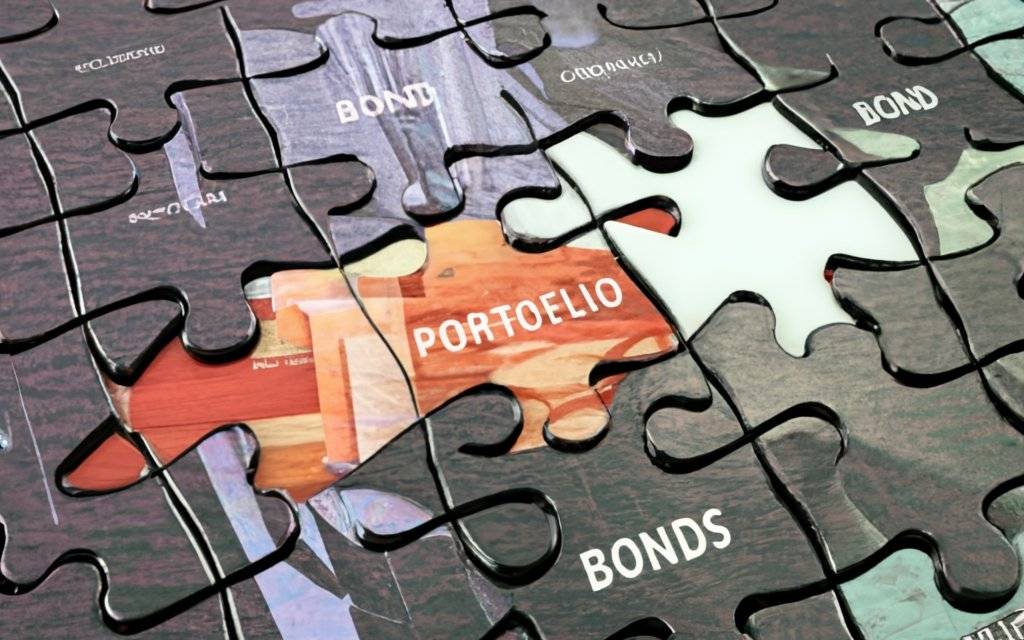Embracing Your Investment Journey: Making Your First Investment with Confidence
Investing can be a daunting prospect, especially for those who are just starting out. With the right resources and guidance, however, anyone can successfully make their first investments with confidence. This article will provide an in-depth look into the world of investing, from understanding the basics to putting together an effective investment strategy.
We'll cover research options, setting goals, choosing a brokerage account, and more—all designed to help you get started on your own investment journey with ease. We'll also answer some common questions about investing so that you can make informed decisions and feel confident in your choices. So let's dive into it and start exploring how to embark on this exciting financial pursuit!
Understanding the investment basics

Investing can be a daunting prospect, especially for those who are just starting out. However, with the right resources and guidance, anyone can feel confident in their first investments. Before you start investing, it's important to know the basics so you can make smart choices and increase your chances of success.
Investment fundamentals and definitions: Investing involves putting money into something with the expectation of getting returns from it over time. There are two main types of investments – stocks and bonds – that can form part of a diversified portfolio. Stocks are ownership shares in a company. They represent a claim on the company's assets and profits. On the other hand, bonds are loans that provide fixed income to an investor for a specific period of time.
In addition to stocks and bonds, there are other investment options, including mutual funds, exchange-traded funds (ETFs), options, futures, real estate, commodities, derivatives, and more. Consider your risk tolerance and financial needs to decide which asset classes to invest in for a well-rounded portfolio.
Diversification is essential for investing because it reduces risk by spreading your money across different types of assets instead of focusing it on one sector or stock. Diversifying your portfolio can safeguard your wealth by maintaining equilibrium and capitalizing on possible gains in various markets.
Risk management is crucial for evaluating potential investment risks before committing capital. It allows for assessing the risks associated with each investment option. This evaluation becomes necessary in every investment decision to guarantee effective risk assessment. When evaluating the risk of an investment, it is important to consider different aspects. Key factors that impact a company's operations include market volatility, liquidity constraints, and the stability of the political situation in its operating region.
Tax implications of investing: It’s also important to understand the tax implications associated with different types of investments since this could have an impact on your overall. Maximizing return on investment is crucial for financial success. is crucial. (ROI). Consulting with a financial advisor or accountant is necessary before making any investment decisions to fully comprehend the applicable taxes and regulations. Make sure you thoroughly understand any possible consequences of making a financial investment.
Taking the time to understand some key investment fundamentals before you get started can give you more confidence and increase your chances of success. For example, it's wise for new investors to diversify their portfolio across different assets classes like stocks and bonds as well as different market sectors. This helps balance out the overall risk. Utilizing index funds and ETFs can create instant diversification in your portfolio at a low cost. It's also crucial to have a realistic understanding of your personal risk tolerance—can you stomach market swings or do you need to invest more conservatively? Setting appropriate expectations on the risk/reward tradeoff can prevent hasty decisions when market volatility strikes.
By understanding these key concepts about investing basics—from definition terms through diversification strategies—readers can gain confidence and knowledge that will help them make informed decisions about their own personal finances moving forward. Next, we'll explore how exactly readers should go about making their first investment!
Researching your options, and setting investment goals

Investing in the stock market can be a daunting task for those beginning their investment journey. But with careful research and planning, you can set yourself up to achieve your financial goals. Start by researching different types of investments, such as stocks, bonds, mutual funds, and ETFs (Exchange Traded Funds). Stay updated on current market events and industry trends to make informed decisions regarding your investment choices. Understanding the associated fees helps determine the expected return from investments after deducting all costs. Diversify your portfolio by investing in different asset classes like stocks, bonds, and cash equivalents to increase long-term returns while minimizing market volatility.
Use online FAQs to find helpful guidance and gain confidence when starting out. To avoid spending more than you can afford if the market changes unexpectedly, set budget limits before investing. Also, regularly review your portfolios every few months to track your progress towards your specific goals.
As you research different investment choices available, narrow your selection by keeping your specific financial goals in mind, like planning for retirement or saving up to buy a house. Setting definite target dates for each goal can help guide your investment strategy. For example, a hands-off investor looking to fund retirement in 25 years could make a simple S&P 500 index fund the bulk of their portfolio holdings. On the other hand, someone focused on saving for a down payment in 5 years would need to invest more conservatively to minimize risk. No matter your objective, revisiting your investment plan annually gives you an opportunity to check if you are on track towards your goals and make any adjustments to get back on course if needed.
Finally, seek advice from trusted advisors like family members or financial professionals since they have valuable insights gained from experience. By taking these steps, readers will be able to make their first investment with confidence.
Choosing a brokerage account and opening it

Investing can seem intimidating, but with the right research and resources, anyone can make their first investment with confidence. One of the key steps in this process is to open a brokerage account. A brokerage account allows you to buy and sell stocks, bonds, mutual funds, ETFs (exchange-traded funds), and other investments.
When selecting a brokerage account, there are a few factors to consider. Determine your investor type and choose the appropriate account, considering whether you are an individual or joint account holder, an active trader, or a long-term investor. Additionally, compare fees and services offered by different brokerages before settling on one. Be aware of any minimum balance requirements and trading restrictions, such as limits on monthly trades or minimum amounts per trade.
Once you’ve selected a brokerage account that meets your needs, it’s time to open it. For tax purposes, it is usually necessary to provide certain documents, such as your Social Security number or driver's license, as well as proof of address, when opening a brokerage account. After submitting this paperwork online or by mail, brokers will contact you via email when your application is approved. You are now prepared to finance your brand-new account!
You can fund your account electronically by using direct deposit from another bank account or by mailing a check. Brokers usually have a minimum funding requirement for trading, typically ranging from $500 to $2,000. Selecting the right brokerage account is essential for successful investing.
Finding the right brokerage account takes a bit of homework, but a little research up front is worth it. Compare factors like minimum account balances, trading fees, and account management expenses offered across leading providers. Pay attention to any inactivity fees if you won't be trading often. Look for brokers offering low-cost index funds and ETFs to keep your investment costs down. Checking customer satisfaction through ratings and reviews can provide insight on a brokerages' platform usability, available tools and support. For example, an active trader may want to choose an account with $0 stock trades and robust research tools, while a passive investor may prefer an automated robo-advisor solution.
Compare fees and services offered by different brokerages before opening an account and start investing. This will help you make informed decisions about your money and find a brokerage that best meets your needs.
Putting together your first investment strategy

Putting together your first investment strategy can be an overwhelming task. However, with the right knowledge and guidance, investing can be a rewarding and successful endeavor. Understanding different asset classes and their role in achieving financial goals is crucial. It involves assessing risk tolerance and selecting a combination of investments that align with those goals.
The types of assets available for investment include stocks, bonds, commodities, real estate, currencies, derivatives, and mutual funds. Each has its own risks and rewards and should be considered carefully before making any decisions. For example, stocks have higher risk but potentially higher returns than bonds or other fixed-income investments. Understanding different asset classes and how they align with your goals helps identify the most efficient investments to achieve those goals.
Determining the level of risk you are comfortable with is crucial in order to effectively achieve your financial goals. It is important to comprehend the risks linked to various asset options and assess your risk tolerance. Assessing risk tolerance helps you align investment strategy with financial goals and make informed decisions on which assets to pursue.When it comes to investments, important factors to consider include age, current income level, and investment duration. Younger investors generally have more time for their savings to grow. Current income level affects the amount of money that can be invested. Lastly, the length of time investments will be held before being sold is also a crucial factor to consider.
By considering these factors, such as a person's risk appetite and preference for conservative or aggressive investments, it is feasible to construct a suitable investment portfolio that balances short-term returns and long-term growth with reduced risk.
After determining the appropriate types of assets and level of risk for your situation, the next step is to select specific investments within each asset class to create an optimal portfolio.It is crucial to not only focus on individual performance measures, but also on diversification.
Diversifying investments across various markets or asset classes helps mitigate total losses as any potential losses in one area can be offset by gains in others, thereby reducing overall losses. Furthermore, diversification offers the possibility to capitalize on growth opportunities during favorable times.
Once a portfolio has been built, it is crucial to consistently monitor its performance and periodically rebalance it. This ensures that the relative weights of each component in the portfolio are maintained, taking into account changes in circumstances like economic conditions or personal finances. This assists in maintaining portfolios balanced over time as circumstances change, instead of just drifting away from their original allocations due to inertia over long periods without review or adjustment.
Crafting a solid investment strategy involves bringing together different asset classes to create a well-rounded portfolio tailored to your individual financial situation and goals. Follow guiding principles around allocation percentages and diversification when selecting specific investments. For instance, a moderate risk portfolio may hold 60% stocks and 40% bonds spread across domestic and international markets. It may also incorporate alternative assets like precious metals or real estate to enhance diversification. Remember to consistently revisit your original allocation targets every year and rebalance holdings as needed. This keeps your investment mix aligned with your preferred risk tolerance as circumstances change over time.
Regularly reviewing portfolios and tracking performance is important for gathering feedback on what is working well and what needs improvement. This should be done every few months to make sure a continuous feedback loop. Relying solely on pre-set expectations without any data points after implementation is not enough.
Tracking and managing your investments over time

Investing is not a one-time decision, but rather an ongoing process. To maximize returns and minimize losses, it's important to track and manage investments over time. Asset allocation is important for managing risk because it helps investors diversify their portfolios by investing in different types of assets. Regularly rebalancing portfolios can help make sure that the desired asset allocation is maintained and performance stays on track with the established goals.
Automating investing is gaining popularity among investors who want to simplify the process of selecting investments and monitoring portfolios. Target date funds are automation tools that enable investors to create investment plans that adjust automatically based on factors like age and retirement goals. Tax-loss harvesting is a method to lower capital gains taxes by selling investments that have decreased in value. Ultimately, tracking and managing investments over time requires discipline and dedication on the part of the investor. Investors should regularly review their portfolio performance to find ways to improve and stay on track with their financial goals. There are tools available to make investing easier, such as automated investing solutions and risk management strategies like asset allocation and rebalancing. Investors can use these resources to gain confidence and make informed decisions about their money. This will help them reach their long-term financial goals more easily.
Conclusion How to start investing How to open a brokerage account, how to make your first investment
Investing doesn't have to be intimidating if you have the right resources and knowledge. By understanding the basics of investing and researching different types of investments, readers can make their first investment with confidence. To create an investment strategy, you need to understand different types of assets, assess risk levels, choose investments for each asset type, and manage them over time.
Additionally, tracking and monitoring investments is essential for making sure that portfolios remain properly balanced and in line with changing circumstances.
When choosing a brokerage account, it's crucial to consider your investor type and compare fees and services provided by various brokerages.Additionally, take advantage of helpful resources as well as seek advice from trusted advisors who can help you make informed decisions about your money. By taking these steps, readers should feel confident making their first investment!
FAQ How to start investing How to open a brokerage account, how to make your first investment
What is a brokerage account?
A brokerage account is an investment account designed to hold and manage investments. It allows investors to purchase stocks, bonds, mutual funds, ETFs (Exchange-Traded Funds) and other investments. These accounts can be opened with a wide range of brokers that offer different levels of services and fees.
How do I open a brokerage account?
To open a brokerage account, you need to fill out paperwork and provide important information, such as your name, address, Social Security Number or Tax ID Number, and bank details. You will also need to make an initial deposit into the account before you can begin investing. Most brokerages have online applications that allow you to quickly complete the process without having to mail in any paperwork.
What type of investments can I make in my brokerage account?
The types of investments you can make in a brokerage account depend on the broker you choose. Generally speaking, though, most brokers offer access to stocks, bonds, mutual funds, ETFs and other types of investments. Some may also provide access to more specialized products such as options or futures contracts.
What fees are associated with opening a brokerage account?
The fees for a brokerage account can differ based on the broker and services they provide. Common fees include commissions for trading stocks or securities, maintenance fees for keeping your money invested, transaction fees for transferring money in or out of your accounts, foreign exchange conversion charges, margin interest charges, and taxes on transactions.
How do I make my first investment with confidence?
Before making your first investment, it is important to do some research. This will help you understand what kind of investor you are and what types of investments would be most suitable for you based on your goals and risk tolerance. When choosing a broker, compare their fees, services, and customer service ratings to find the best one for your needs regarding price and quality. Finally, it’s wise to seek advice from trusted advisors before making any kind of investment decision so that you are making informed decisions about your money backed up by sound advice from financial professionals who have experience in investing markets.




0 Comments: